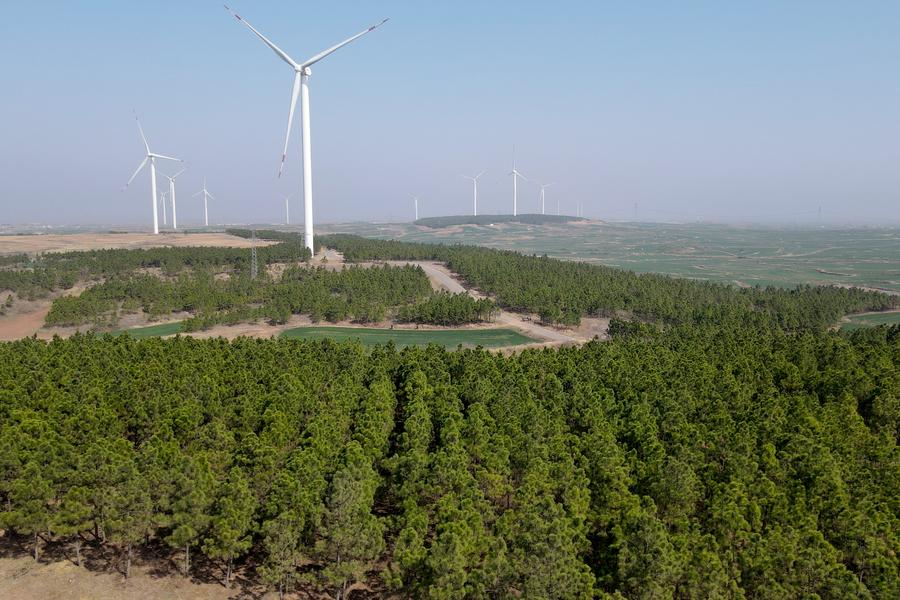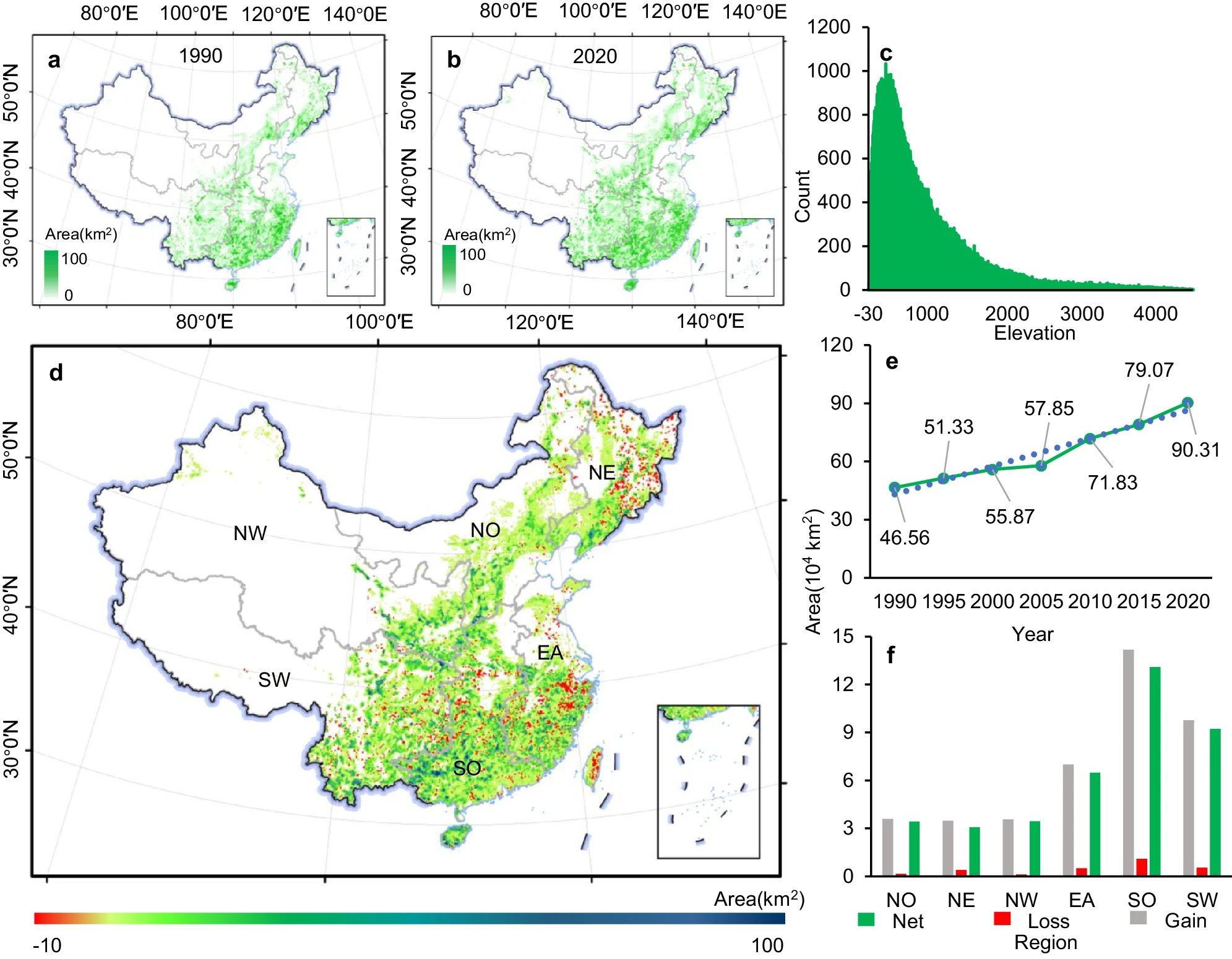Editor's note: Today marks the International Day for Biological Diversity, and this year's theme is "Be part of the Plan," which encourages governments, businesses, and individuals to play a role in preserving biodiversity. In a recent publication, researchers from Peking University studied China's decades-long plan to make the nation greener, which has greatly contributed to the global mission of carbon neutrality and biodiversity conservation.
Peking University, May 22, 2024: A study from Peking University has shown that China's large-scale afforestation and reforestation efforts have significantly boosted carbon storage in the country's planted forests between 1990 and 2020.
In a paper published this May in Nature Communications, a research team led by Cheng Kai and Yang Haitao from the School of Earth and Space Sciences explored this topic in depth. The paper, titled "Carbon storage through China’s planted forest expansion," underscores the vital role these forests play in carbon sequestration, soil conservation, and ecosystem restoration, establishing China as a global leader in environmental protection and sustainability.
This aerial photo taken on March 10, 2023, shows a view of forests on Luchong Mountain in Zhuding Town, Wuhe County, east China's Anhui Province. (Xinhua/Huang Bohan)
Why it matters:
- China’s extensive planted forests are crucial for carbon storage, which is vital for mitigating climate change, but only a few research captured the complex dynamics of China’s planted forest area and its carbon storage.
- Enhancing carbon storage through afforestation is crucial for climate change mitigation and achieving China's Carbon Neutrality Target by 2060.
*Forests and biodiversity:
"The conservation of global biodiversity is utterly dependent on the way in which we interact with and use forests," according to The State of the World’s Forests (2022), a flagship publication by the UN Food and Agriculture Organization (FAO).
Forests contain 60,000 different tree species, 80 percent of amphibian species (animals that live both on land and in water), 75 percent of bird species, and 68 percent of the world's mammal species, according to the FAO.
a, b China’s planted forest distribution in 1990 and 2020 in a 0.1° grid scale, respectively. c Distribution of the planted forests along with various elevations. d Spatial distribution of planted forest area gains and losses from 1990 to 2020 in a 0.1° grid scale. e Change in planted forest area every five years from 1990 to 2020. f Planted forest area gains and losses at six geographical regions from 1990 to 2020. NO north, NE northeast, NW northwest, EA east, SO south, SW southwest.
Key points:
- Carbon storage in the biomass of China's planted forests increased substantially from 1990 to 2020, with a sharp rise observed after 2010.
- Regionally, the southwestern, southern, and eastern regions saw the most significant increases in carbon storage. The southwestern region experienced the largest increase, with 25.3% of the carbon storage gain attributed to the conversion of shrublands to planted forests.
Zoom in:
- The National Forest Management Plan (2016–2050) provides a policy framework for the sustainable management and development of China's forest resources, including the continued expansion and improved management of planted forests, over the next few decades.
- The overall increasing trend of China's planted forest area is expected to persist in the future though the rate of increase may decline due to limitations in available land area for planted forests.
Methodology:
- Utilized the entire Landsat archive from 1988 to 2021, processed on Google Earth Engine, to generate high-resolution planted forest maps at 5-year intervals.
- Integrated over 600,000 vegetation survey samples from crowdsourcing, field surveys, and national forest inventories.
- Employed a Random Forest machine learning algorithm and derived a comprehensive Landsat time series for planted forest classification.
Conclusions & Significance:
This research underscores the importance of China's afforestation efforts in addressing environmental challenges and contributing to global climate change mitigation. By demonstrating the significant increase in carbon storage, the study reinforces the need for continued and expanded afforestation initiatives.
The research suggests China should evolve from mere afforestation to a more holistic approach that encompasses the protection, management, and utilization of planted forests, with an emphasis on planted forest tending.
Link to the paper: https://www.nature.com/articles/s41467-024-48546-0
*This article is featured in PKU News' "Why It Matters" series. More from this series.
Written by: Aden Tan
Edited by: Dennis Meng
Cover photo: Unsplash


